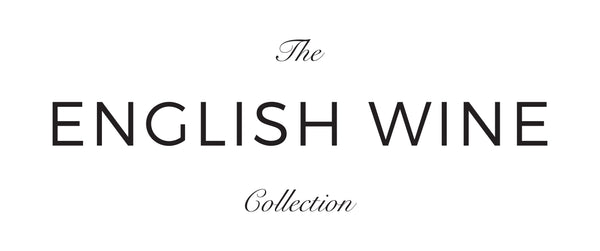
Interview with Bob Lindo former fighter pilot and now CEO of Camel Valley
Share

Bob Lindo CEO - Camel Valley
Hi Bob, where did it all start for you, Why did you join the RAF and what lead you to starting Camel Valley?
I joined the RAF in 1970 as University Cadet pilot and flew (Chipmunks) with Cambridge University Air Squadron. After University: Cranwell (Jet provosts), Valley (Gnats and Hunters), Brawdy (Hunters). During the next 16 years I was based in Lincolnshire, Yorkshire and Saudi Arabia (Strikemasters).
You have flown many different fighter planes and you have also been a display Pilot flying Vintage Pair and Vulcan Pilot aircraft. What is it like flying these older planes?
I've flown Jet Provosts, Gnats, Hunters, Jaguars, Vulcans and Vampires. The most difficult to fly, in many ways, was the Vampire, it had poor cockpit visibility, like looking out of a letter box! I led one of the display teams, which was great fun and was in the Vulcan display crew – displaying all over the world. My most memorable was in Shearwater Halifax Canada.
You were also a flying Instructor at the Central Flying School, what did this involve?
My natural home was instructing; I became an instructor’s instructor and examiner. I made the RAFs pilot navigation film and the instructing skills have been a great help doing vineyard tours! Some of my memorable moments where also doing loops barrel rolls, stall turns, vertical rolls and horizontal rolls!
Did you see ‘action’ as a fighter pilot?
Luckily, not in the way you mean, but the cold war had a lot going on for Vulcan crews. Luckily, the unthinkable, never happened.
Did you have any ‘scary’ moments whilst training pilots?
The Scariest moment was ejecting – abject terror!
Some of my proudest moments are getting my wings at RAF Cranwell. This came pretty high as did all the aircraft Ist pilot, Captain moments. Central Flying school aerobatics trophy and Cup of Honour winner RAF valley (Gnats)
Leading the entire Royal Air Force over Buckingham palace for the Queen Mother’s 80th birthday. We took off from Scampton and were joined by Red Arrows, Harriers, Phantoms, Hawks and flew over London.
I’ve read that, at all times, there are always some fighter pilots sitting by their planes ready to be up in the air in minutes to defend our country, how true is this and how does it feel to be in that position?
100% true - lots of boredom, mixed with adrenalin moments. I can't go into this without breaking the Official secrets Act!
Apart from the older planes you have also flown modern aircraft such as Gnat, Hunter, Strikemaster and Jaguar. This must have must have been exciting, what was special about each plane?
Jet provost – great reliable and forgiving trainer, wonderful for aerobatics. Gnat – very sensitive. Hunter – raw power, jaguar – complicated,
You were also the flying Instructor at the Central Flying School. How did this vary from being a pilot?
Loved it, lots of flying!
You had a serious flying accident back in the 80s and, I understand, had to learn to walk again, how did you cope with that and how did it affect your outlook on life?
It didn’t, I shrugged it off – nobody died.
I went to Headley Court for rehabilitation and found myself in the company of many in similar circumstances. None of us were ill and we had a great time recovering as much mobility as we could.
What parallels, if any, are there, between flying, particularly at a top level, to running a vineyard?
The main parallels that I have brought across from being in the RAF are organisation and attention to detail. Organisation: every day we start with a programme for everybody and a briefing.
At what point did you decide to leave the RAF and start an English vineyard?
Annie and I, agreed early on that I would leave at my 38 option and we would farm together.
Initially you ran the farm, breeding livestock, what made you shift to starting a vineyard?
We just felt moved in that direction by some lovely summers. We gave it a go and did the work whilst learning on the job.
Camel Valley has been a great success, to what do you put that down?
Being around long enough, not having a master plan, doing the work ourselves. Expanding only on the value of wine sales, but mostly having a clever, intelligent enthusiastic second generation - Sam
Have you always had a passion for wine? Can you talk through some of your memorable wine moments?
My passion for wine grew with time. All the usual places for wine tours. Best moment was the International Wine Challenge Lifetime achievement award last year – for ‘raising the quality of English wine’
It seems that Camel Valley is a family passion, how does the dynamic work between you all?
We work together, but Annie still likes to do her original vineyard alone. Sam runs the winemaking team and I fill in questionnaires!
The Duchess of Cornwall has visited the vineyard, how much interest does she and Prince Charles take in Cornwall’s wine industry?
HerRH has been to Camel Valley twice and she has been a fantastic supporter and WineGB President. We have supplied Clarence House, St James’s Palace, Highgrove and Buckingham Palace on numerous occasions – hence the Royal Warrant.
What plans do you have for yourself and Camel Valley in the future?
Take each day as it comes, don’t plan too far ahead – ‘life’s what happens when you’re planning other things’- John Lennon.
What advice would you have for people starting out in the wine industry today?
Make your office small, so you don’t want to be in it too much and get out and get your hands dirty.
To find out more about Camel Valley''s English wines see the links below:
Camel Valley English vineyard interview
